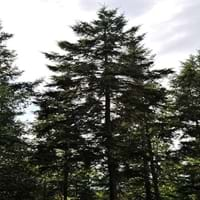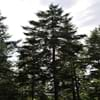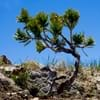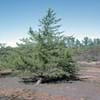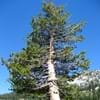Life Span
Perennial
Perennial
Type
Needled or Scaled Evergreen
Perennial
Origin
Northeastern United States, North-Central United States, Alaska, Canada
Hybrid origin
Types
Oriental spruce, Bog spruce, Weeping spruce
Aristocrat, Buckeye Belle, Henry Bockstoce , Abalone Pearl, Coral Supreme, Cytherea, Charlie's White
Number of Varieties
Not Available
Habitat
Moist Soils, Slopes, Swamps, Well Drained
Hillside, Woods
USDA Hardiness Zone
1-6
Not Available
Sunset Zone
A1, A2, A3, 1a, 1b, 2a, 2b, 3a, 3b, 4, 5, 6, 7
Not Available
Habit
Narrow Upright/Fastigiate
Clump-Forming
Flower Color
White
Not Available
Flower Color Modifier
Bicolor
Bicolor
Fruit Color
Pink
Not Available
Leaf Color in Spring
Green, Sea Green, Blue Green, Gray Green
Not Available
Leaf Color in Summer
Blue Green, Gray Green
Not Available
Leaf Color in Fall
Blue Green, Gray Green
Not Available
Leaf Color in Winter
Blue Green, Gray Green, Dark Green
Light Green
Leaf Shape
Needle like
Compound
Plant Season
Spring, Summer, Fall, Winter
Spring, Summer
Sunlight
Full Sun, Partial Sun
Full Sun, Partial Sun, Partial shade
Type of Soil
Clay, Loam
Clay, Loam
The pH of Soil
Acidic, Neutral
Acidic, Neutral, Alkaline
Soil Drainage
Average
Average
Bloom Time
Not Available
Not Available
Tolerances
Drought
Drought
Where to Plant?
Ground
Ground, Pot
How to Plant?
Cuttings, Seedlings
Grafting, Seedlings, Stem Planting, Transplanting
Plant Maintenance
Medium
Medium
Watering Requirements
Average Water Needs, Do Not over Water, Requires regular watering
Does not require lot of watering, It cannot sustain wet-feet, Keep the ground moist but not water-logged, Needs watering once a week, Prefer drip-irrigation instead of Over-head watering, Water occasionally
In Summer
Lots of watering
Lots of watering
In Spring
Moderate
Moderate
In Winter
Average Water
Average Water
Soil pH
Acidic, Neutral
Acidic, Neutral, Alkaline
Soil Type
Clay, Loam
Clay, Loam
Soil Drainage Capacity
Average
Average
Sun Exposure
Full Sun, Partial Sun
Full Sun, Partial Sun, Partial shade
Pruning
Pinch Tips, Remove crossing or rubbing branches, Remove damaged leaves, Remove dead branches, Remove dead leaves, Remove dead or diseased plant parts
Do not prune during shooting season, Prune to control growth, Remove dead or diseased plant parts, Remove deadheads
Fertilizers
All-Purpose Liquid Fertilizer
All-Purpose Liquid Fertilizer
Pests and Diseases
Red blotch
Botrytis Blight, Leaf spot, Stem spot, Viruses
Plant Tolerance
Drought
Drought
Flower Petal Number
Single
Not Available
Foliage Texture
Fine
Not Available
Foliage Sheen
Glossy
Not Available
Allergy
Dermatitis
Not Available
Aesthetic Uses
Showy Purposes
Beautification, Bouquets, Showy Purposes, Used for decorating walls, fences, gates, hedges, etc.
Beauty Benefits
Good for skin
Not Available
Environmental Uses
Air purification, Shadow Tree
Air purification
Medicinal Uses
anti-inflammatory, Disinfectant, Kidney problems, Odontalgic, Poultice, Salve, Stomachic, tuberculosis, Vulnerary
Cough, Gout, Headache, Heartburn, Kidney problems, Upset stomach, Urinary tract problems
Part of Plant Used
Flowers, Inner Bark, Seeds
Flowers, Root, Seeds
Other Uses
Disinfectant, Gum, Paper pulp, Pitch, String, Used as a dye, Used in paper industry, Waterproofing
Showy Purposes, Used as Ornamental plant, Used for fragrance
Used As Indoor Plant
No
No
Used As Outdoor Plant
Yes
Yes
Garden Design
Bog Garden, Screening, Wind Break
Cutflower, Feature Plant, Foundation, Mixed Border
Botanical Name
PICEA mariana
PAEONIA 'Rachel'
Common Name
Black Spruce, Bog Spruce, Swamp Spruce
Intersectional Peony
In Hindi
Black Spruce Tree
Intersectional Peony
In German
Schwarz Fichte
Intersectional Pfingstrose
In French
Noir Épicéa
intersectionnelle Pivoine
In Spanish
Negro árbol de abeto
interseccional Peony
In Greek
Μαύρο Spruce Tree
διατομεακές Παιώνια
In Portuguese
Árvore Spruce Preto
interseccional Peony
In Polish
Czarny Świerk Drzewo
międzysegmentowe Piwonia
In Latin
Niger abiegnis
Intersectional AGLAOPHOTIS
Phylum
Coniferophyta
Tracheophyta
Class
Pinopsida
Magnoliopsida
Order
Pinales
Saxifragales
Family
Pinaceae
Paeoniaceae
Clade
Not Available
Angiosperms, Core eudicots, Eudicots
Tribe
Not Available
Not Available
Subfamily
Pinoideae
Not Available
Number of Species
Not Available
Season and Care of Black Spruce and Intersectional Peony
Season and care of Black Spruce and Intersectional Peony is important to know. While considering everything about Black Spruce and Intersectional Peony Care, growing season is an essential factor. Black Spruce season is Spring, Summer, Fall and Winter and Intersectional Peony season is Spring, Summer, Fall and Winter. The type of soil for Black Spruce is Clay, Loam and for Intersectional Peony is Clay, Loam while the PH of soil for Black Spruce is Acidic, Neutral and for Intersectional Peony is Acidic, Neutral, Alkaline.
Black Spruce and Intersectional Peony Physical Information
Black Spruce and Intersectional Peony physical information is very important for comparison. Black Spruce height is 3,000.00 cm and width 60.00 cm whereas Intersectional Peony height is 71.10 cm and width 60.00 cm. The color specification of Black Spruce and Intersectional Peony are as follows:
Black Spruce flower color: White
Black Spruce leaf color: Green, Sea Green, Blue Green and Gray Green
Intersectional Peony flower color: Not Available
- Intersectional Peony leaf color: Not Available
Care of Black Spruce and Intersectional Peony
Care of Black Spruce and Intersectional Peony include pruning, fertilizers, watering etc. Black Spruce pruning is done Pinch Tips, Remove crossing or rubbing branches, Remove damaged leaves, Remove dead branches, Remove dead leaves and Remove dead or diseased plant parts and Intersectional Peony pruning is done Do not prune during shooting season, Prune to control growth, Remove dead or diseased plant parts and Remove deadheads. In summer Black Spruce needs Lots of watering and in winter, it needs Average Water. Whereas, in summer Intersectional Peony needs Lots of watering and in winter, it needs Average Water.
